I have rendered a plane using Three JS with a texture image. I want to check the active mipmap level being used as I move the object front and back.
I am trying to fetch the active mipmap level being used to render the texture by using the method provided for WebGLRenderer called getActiveMipmapLevel(). Somehow the active mipmap level always remains 0 no matter how far I move the object front / back. I am trying to refetch and print the value in the render loop.
Any idea why?
var scene2 = new THREE.Scene();
var mipmapped_renderer = new THREE.WebGLRenderer({antialias: true});
mipmapped_renderer.setClearColor("#000000");
mipmapped_renderer.setSize(window.innerWidth , window.innerHeight);
mipmapped_renderer.autoClear = false;
var mipmapped_camera = new THREE.PerspectiveCamera(
75,
window.innerWidth / window.innerHeight,
0.1,
1000
);
mipmapped_camera.position.z = 10;
document.getElementById('left-canvas').appendChild(mipmapped_renderer.domElement);
window.addEventListener('resize', () => {
mipmapped_renderer.setSize(window.innerWidth, window.innerHeight);
mipmapped_camera.aspect = window.innerWidth / window.innerHeight;
mipmapped_camera.updateProjectionMatrix();
});
var box2 = new THREE.PlaneGeometry(100, 100, 8 );
var texture2 = new THREE.TextureLoader().load( 'textures/chessboard2/chessboard_512.png' );
texture2.wrapS = THREE.RepeatWrapping;
texture2.wrapT = THREE.RepeatWrapping;
texture2.offset.set(0, 0);
texture2.repeat.set(2, 2);
texture2.minFilter = THREE.LinearMipmapLinearFilter;
texture2.magFilter = THREE.LinearFilter;
texture2.needsUpdate = true;
texture2.generateMipmaps = true;
var material2 = new THREE.MeshBasicMaterial({map: texture2, side: THREE.DoubleSide});
var mesh2 = new THREE.Mesh(box2, material2);
mesh2.scale.x = -1;
mesh2.rotation.x = 90
scene2.add(mesh2);
// post processing
var light = new THREE.PointLight(0xFFFFFF, 1, 500);
light.position.set(10, 0, 25);
scene2.add(light);
// render
var render = function() {
requestAnimationFrame(render);
mipmapped_renderer.render(scene2, mipmapped_camera);
document.getElementById('mipmapLevel').innerHTML = mipmapped_renderer.getActiveMipmapLevel()
}
// animation
var rotSpeed = 0.1;
function onKeyDown(event) {
event.preventDefault();
var keyCode = event.which;
if (keyCode == 87) {
mipmapped_camera.position.z -= 1;
} else if (keyCode == 83) {
mipmapped_camera.position.z += 1;
} else if (keyCode == 65) {
mesh2.rotation.y += rotSpeed;
} else if (keyCode == 68) {
mesh2.rotation.y -= rotSpeed;
}
render();
}
render();
window.addEventListener('keydown', onKeyDown, false);
